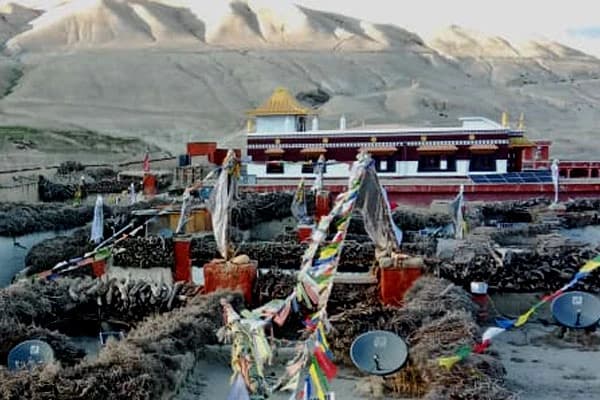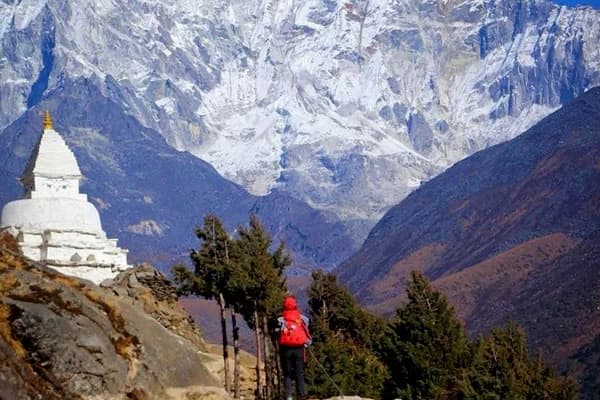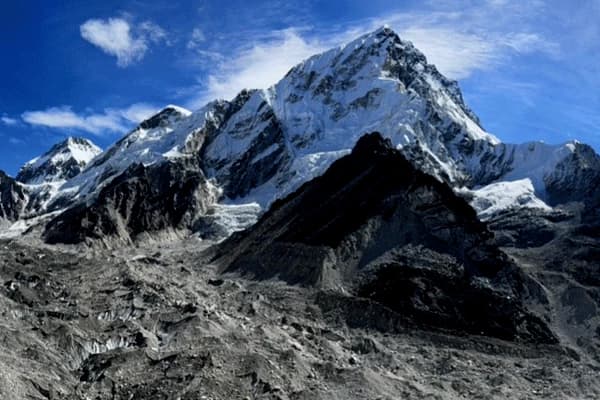Why is it necessary to choose the right season for the Annapurna Circuit?
Choosing when to do the Annapurna Circuit Trek matters significantly because weather and trail conditions determine both safety levels and satisfaction with the hiking experience. When the weather conditions are favorable, the mountains remain visible, and the hiking trails remain dry and stable while the danger from landslides and blocked passes reduces.

Severe weather conditions such as cold temperatures and rain create challenging and dangerous hiking conditions, mostly because acclimatization becomes essential at high elevations to avoid altitude sickness. Your choice of travel time allows you to witness the finest local culture and landscapes while trekking Annapurna Circuit.
However, many people are also looking forward to other restricted treks such as the Kanchenjunga Trek and the Manaslu Circuit Trek, but it requires a special permit to get access, limiting the hikers. Hence, this trek to Annapurna Circuit can also be done solo with no other travel partner opening the gate to everyone.
What is the best time for the Annapurna Circuit Trek?
If you are thinking about undertaking the Annapurna Circuit Trek in Nepal, then it might raise multiple questions in your mind, and "What's the perfect time for this trek to Annapurna Circuit?" stands among them. Following this question, you might wonder if it is possible to do it in the off-season.
Well, if I have to put it simply, then the best seasons to visit the Annapurna Circuit are Spring (March to May) and Autumn (September to November), which are considered the peak seasons. There is usually clear, dry weather during these two seasons. It also becomes easier to hike to higher elevations because it won't be cold. However, the upper terrains fall under the rain shadow. It is also regarded as an all-around trek that can be done through the four seasons: Autumn, Spring, Summer, and Monsoon.
Although winter and monsoon seasons may be considered off-season with rain and snowfall adding challenges, with proper preparations, you can complete the Annapurna Round Trekking with memorable experiences. And, if you have some prior experience and wants to try something enchanting then, you can obviously opt for summer and winter as well.
Annapurna Circuit Trek in Spring (March to May)
Well, if you are looking for the best time to do a trekking experience, you will find spring at the top of the list. It is considered a peak time for some special features. To start things off, the lower Annapurna region showcases vibrant red, white, and pink rhododendron,s while off-white orchids, blue irises, magnolias, primulas, and the rare Himalayan blue poppy bloom in the lush green valleys of the Annapurna Conservation Area (ACA).

Temperatures between 5 to 15 degrees create the most ideal conditions throughout the entire season. Ascending to the higher altitude reveals breathtaking mountain views which rise above a perfectly transparent sk,y making us forget about how tired we are.
Why trek to the Annapurna Circuit in March?
The Annapurna Circuit presents an optimal condition for hiking during the month of March. Spring has arrived after winter although the heat hasn't reached uncomfortable levels. The weather brings better mountain visibility as the skies become clearer during this month.
The daytime climate during March in low regions ranges from 15 to 20 degrees Celsius, and sunlight creates a pleasant warm temperature. But, you can see the higher paths still covered in some snow so you can have a mixed experience of both warm and cold. The hills become colorful as various red, white, blue, and pink flowers start to bloom, decorating the trail.
During this time, the trails welcome fewer visitors which results in less crowding at the route and the teahouses. Hence, If you are planning to do this Annapurna Circuit Trek in March then, you will be rewarded with the best possible views of mountains and landscapes adorned with thriving flowers.
Why trek to the Annapurna Circuit in April?
Embarking on the Annapurna Circuit Trek in April delivers one of its optimal conditions as the climate provides a comfortable and delightful experience, and each day extends longer so you can fully appreciate your daily trek. The mountain vistas become visible because of the sunny and clear days without any clouds to hinder the view. The daytime temperatures at middle altitudes range from 15 to 20 degrees Celsius, so you can have a comfortable day of trekking.
April brings beautiful flowers everywhere; as you can see, bright pink and red tints paint the rhododendron forests, along with many other wildflowers. Nepali New Year falls around mid-April, which is a perfect chance to immerse the vibrant culture of the Nepalese people in the Annapurna Region. The trekking activity in April draws more visitors than during March yet remains less than in autumn.
Why trek to the Annapurna Circuit in May?
May is an enjoyable month to start the Annapurna Circuit Trek in Nepal which is the end of spring before the monsoon starts. Temperatures in May rise to become warm, while the early days remain clear for stunning views of the landscapes.
The flowers maintain their bloom while the valleys show vibrant green color, and the wildlife becomes active, so you might even spot rare species like the red panda or Himalayan Tahr in the high-altitude regions. The late months of May bring occasional afternoon cloud cover as well as brief rain showers, but you will come across fewer trekkers while hiking through the Annapurna Circuit Trail.
Annapurna Circuit Trek in Autumn (September to November)
Autumn is the perfect season for the Annapurna Circuit Trek because of its excellent viewing conditions. The daily temperature ranges between 15-20°C in lower altitudes, while middle zones stay at 5-15°C. Mountain view during this season reaches their peak since the monsoon's rainfall has cleared the skies and the atmosphere clears perfectly to give you spectacular panoramic views.
The tea houses welcome a higher number of visitors than normal, which allows hikers to meet each other and exchange stories. As harvest season arrives, the hills transform into golden-brown colors while many traditional festivals take place in villages.
That's it, now you know why autumn is a popular season. But wait, let’s explore this in detail.
What to expect during the Annapurna Circuit Trek in September?
Trekking Annapurna Circuit experiences the end of its monsoon season during September. Early September might still have some rain, but don’t worry! It gets better as the month goes on, and by late September, the skies start clearing up, giving better mountain views.
The lower elevations maintain daytime temperatures ranging from 20 to 25 degrees Celsius, and the middle elevations remain comfortable at 15-20°C. The best thing about September to undertake the Annapurna Circuit Trekking is that it delivers a landscape full of vibrant greenery because rainwater fills rivers while waterfalls maintain their powerful form.
There are fewer trekkers than in October, so the trails are less crowded, which is perfect for some alone time. You might catch early harvest activities in villages along the way, where the villagers harvest gold-like crops from terraced fields.
What to expect during the Annapurna Circuit Trek in October?
The sky remains transparent throughout October, thus providing breathtaking views of the massive mountains every day. It has ideal daytime temperatures ranging from 15 to 20 degrees Celsius which enables comfortable extended walking hours without excess sweat.
The weather remains constant due to zero rain or snowfall, and the atmosphere feels fresh. Do you want to know what the major highlight of October is? The main festival of Nepalese people, Dashain, falls in this month, so you can enjoy the local culture in the Himalayas, and the hills shine golden bright during harvest time which adds a cultural touch to your Trek to Annapurna Circuit in Nepal.
What to expect during the Annapurna Circuit Trek in November?
The climate during November remains cool while remaining highly stable because there are few rainy days and no clouds in the skies. The daytime temperatures in the Annapurna Trekking Trail span between 10-15°C yet nighttime temperatures drop to 0-5°C and fall even below freezing points on higher elevations.
The weather creates crystal-clear air conditions which offer exceptional mountain views with deep blue skies contrasting the white mountain tops. Tihar is another major festival of Nepal which falls in this month, so make sure you immerse yourself in the local culture and tag along in celebrations. Trails and tea houses, stay active even though November has fewer trekkers than October.
Trekking Annapurna Circuit in Winter (December to February)
If you are thinking about doing the Annapurna Circuit Trek in winter, you must be aware of a few things. Annapurna Region reaches its lowest temperatures between December and February. High temperatures from the summer months drastically decrease during the daytime in the Annapurna Region. At lower regions, daytime temperatures stay within 5-10 degrees Celsius, while middle elevations show temperatures between -5 degrees Celsius to zero. Without proper preparation, night temperatures at high elevations present challenging conditions because they drop from 5 degrees Celsius to -15 degrees Celsius.

However, winter offers the most exceptional visibility because it creates perfect weather conditions without cloud formation or fog. The Annapurna Circuit Trekking Route is covered in thick white snow, which is like a fairytale setting. The snowcapped mountains and white glaciers create a perfect backdrop, just right for a picture! Trails in this area remain empty because few trekkers come during this time, which leads to peaceful surroundings.
The seasonal transition from autumn to winter begins in December while the weather grows colder and the number of hikers decreases. The temperatures reach their lowest point during January as snow accumulates heavily enough to block access through Thorong La or cause it to become completely impassable. The temperature starts rising in February because winter transformation begins throughout the lower elevations while snow begins to melt.
The winter season presents obstacles, but do not give up hope since proper preparations and planning lead to trekking success through the Annapurna Circuit Trek. You must wear extremely warm clothing and carry a quality sleeping bag and reliable hiking boots. When traveling through distant areas of Nepal, make sure you organize your tea house stops because some facilities close down during the winter season. Start your hike during morning hours since daylight lasts approximately 7-8 hours until total darkness falls.
Is it possible to do the Annapurna Circuit Trek in the Monsoon season?
Do you seek adventure through extreme limit-testing experiences? If yes, then the Annapurna Circuit Trekking during monsoon season stands as an adventure perfect for you since it offers demanding trail conditions alongside testing weather patterns to push your endurance.
Although monsoon is not a popular season for Annapurna Round Trekking and many consider it to be impractical, it is not impossible. The constant heavy rainfall leads to slippery and muddy trails that make it hard to walk on, and the possible landslide may block the route. These conditions may lead to injuries and accidents if unlucky. And the wet and forested area is infested with leeches.
Watch out for those, as they can be a hassle. Not to mention, the mountain scenery is often blocked by clouds, so you may not see the mountains clearly, which can be a bummer. The scarcity of operating tea houses complicates the search for both food and lodging options. To top it off, the weather causes both flight and bus schedules to be delayed.
Now looking at the bright side, monsoon brings green and lush forests and walking through it creates a mystical experience. Plus, you will find few to no trekkers on the route, so you can enjoy a peaceful time with nature and yourself. Have I mentioned that the teahouses are a lot cheaper too? Yep, bang for your buck!
Make sure to plan and pack waterproof jackets and pants with bag covers to protect from rain. A local guide is your best bet to ensure the successful completion of the Annapurna Hike.
Tip: The Nar Phu Valley Trek and Upper Mustang Trek make suitable alternatives for the Annapurna Region Trek since these trekking routes experience less rainfall due to shadowy areas.
To conclude- Ideal Seasons to Visit the Annapurna Circuit in Nepal
The Annapurna Circuit Trekking is accessible all year round, so you can choose any season you like. There is no such thing as the wrong trekking season. According to your preference and preparations, you can do this trek in any season you like, yep, even in off seasons!
It's your call to decide on when to do the Nepal Annapurna Circuit Trek. Bird watchers and animal lovers should consider visiting during spring since Annapurna Conservation Area shows an abundance of wild birds and animals. Spring presents flower enthusiasts with a broad spectrum of flowers including rhododendron, orchids and Himalayan blue poppy among others.
And if you are more into the warm golden vibes, autumn is just the time with golden sunlight and clear views of mountain peaks shining in the golden hue. It is also an ideal time for cultural immersion and understanding the rich history of the locals in the Himalayas.
Looking for some “Me” time? Winter and monsoon have the least trekkers on the route, so you can enjoy your time with nature. You can escape the bus crowds and enjoy the trail to yourself. However, beginners should receive proper preparation and guidance before starting their trekking journey.
Final Seasonal Overview of the Trek to Annapurna Circuit
It's safe to say that the trek to Annapurna Circuit in Nepal can be best experienced during the Spring and Autumn seasons. These seasons provide ideal conditions where pleasant weather meets outstanding mountain vistas together with suitable walking conditions.
The hiking temperatures during spring align with the trails becoming colorful from rhododendrons in full bloom. Autumn brings stable trails, which form after the monsoon rains while producing crisp, clear skies. Access to Thorong La Pass (5,416m) remains possible during these times, along with open tea houses and minimal threats from landslides or severe cold weather conditions.
During June-August monsoon season, heavy rainfall creates slippery terrain and reduced facilities while December-February winter brings extreme cold together with blocked mountain passes.
Planning remains essential no matter when you decide to tackle the Annapurna Circuit. Why wait longer? Destination Himalaya Treks and Expedition leads successful completion of Annapurna Circuit Trek through experienced guide services across all circumstances. For more queries, email us at info(a)destinationhimalayatreks.com anytime.







